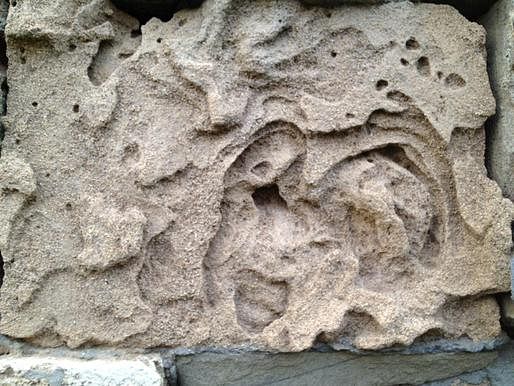
Last week I had the great fortune to go to Pisa, Italy, for the first time and Florence for the second time. I am struck by many parallels between the era of the early 14th century and our own time, more than I can go into in this brief post. I am not talking about the post-modernist concern with visual communication. Rather, questions of process and disciplinarity are my primary interest.
The hypothesis I'm announcing in the headline here - that Brunelleschi may be considered as a precedent to today's Building Information Modeling (BIM) - is not one I'm fully prepared to back up yet. My hunch is that the disciplinary position that Brunelleschi invented maps more closely onto how we work now than how architects worked in the 20th century. Here are some of the questions I am looking into:
- What is the relationship between the work of Neri di Fioravante, the dome's 14th century designer, and that of Brunelleschi?
- How did the herringbone pattern emerge? Here I am especially wondering about the negotiation with labor. (Apparently the bricklayers demanded higher pay and he fired all of them and trained new laborers instead).
- What happened to the tools that Brunelleschi designed to enable construction? Did they become distributed more broadly or were they too specific to the Duomo project to be useful elsewhere?
Below are 2 photos. The first is taken inside the circulation that leads visitors up through the Duomo in Florence. The 2nd is from a wall in Pisa that has been worn down gorgeously over almost a thousand years. These two things may or may not be related in subsequent posts.

Herringbone brick pattern, inside the double shell of the dome of Basilica di Santa Maria del Fiore (The Duomo) in Florence, Italy. Photo courtesy of Chloe Bass.

Medieval city walls at Porta Nuova in Pisa, Italy, built in the 12th century. Photo courtesy of Chloe Bass.
Posts are sporadic. Topics span architecture, urban design, planning, and tangents from these. I sometimes include excerpts of academic articles.
3 Comments
Maybe the herringbone pattern was put in to counter the doagonal forces at work on the facets of the dome much like cross buck supports help a big door from racking? the herringbone pattern looks like it would meet the diagonal force in compression where as the horizontally laid brick would be ripped in alf with a crack.
Take a look at the differences between Brunelleschi and Alberti. Brunelleschi was first and foremost an artisan, a maker and architect/engineer who remained on site during the construction of his projects. Alberti, on the other hand, believed architecture lied in the notation. He preached that the true concepts pushed forward by an architect remain in the drawings and notation that the architect puts forth, not in the resulting building or artifact. The similarities and differences between these two architects may help to push your hypothesis forward.
Thayer is correct.
Block this user
Are you sure you want to block this user and hide all related comments throughout the site?
Archinect
This is your first comment on Archinect. Your comment will be visible once approved.